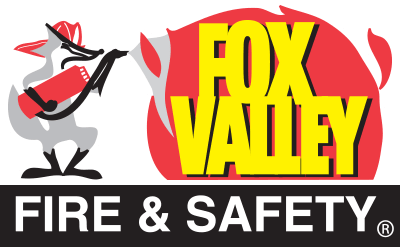 In December, the first provisions of a long-planned update to OSHA’s Hazard Communication Standard (HazCom) went into effect. That first step called for most employers in workplaces where hazardous materials are handled to educate employees regarding changes to the labeling of the materials in question. In the coming months and years ahead, further provisions will be enforced in an ongoing attempt to make U.S. regulations on the handling of hazardous materials more consistent with international standards. Recently, in our company newsletter Fox Eye on Safety, we’ve been reviewing the salient points of the new standard, and here we’ll present a summary of that information.
In December, the first provisions of a long-planned update to OSHA’s Hazard Communication Standard (HazCom) went into effect. That first step called for most employers in workplaces where hazardous materials are handled to educate employees regarding changes to the labeling of the materials in question. In the coming months and years ahead, further provisions will be enforced in an ongoing attempt to make U.S. regulations on the handling of hazardous materials more consistent with international standards. Recently, in our company newsletter Fox Eye on Safety, we’ve been reviewing the salient points of the new standard, and here we’ll present a summary of that information.
The first major change is in Material Safety Data Sheets (MSDS), which will now be called Safety Data Sheets (SDS). Labels must now include the following information:
- Product Identifier: This can be the chemical name, code number or batch number as determined to be appropriate by the manufacturer, importer or distributor. The same product Identifier must be on both the label and in Section 1 of the SDS.
- Signal Word: The words “Danger” and “Warning” are used to indicate the relative level of severity of the hazard. “Danger” is used for more severe hazards, and “Warning” is used for less severe hazards.
Each label will only have one of these signal words on the label, no matter how many hazards a chemical may have. The signal word will be designated for the most severe chemical.
- Hazard Statement(s): This describes the nature of the hazard(s) of the chemical, including the degree of hazard where appropriate. For example: “Causes damage to kidneys through prolonged or repeated exposure when absorbed through the skin.”
- Manufacturer Information: Name, address, and phone of the chemical manufacturer, distributor, or importer.
- Precautionary statement(s): This is a phrase describing the recommended measures to be taken to minimize or prevent adverse effects resulting from exposure to the chemical, from miss handling or improper storage.
- Pictogram: These are in the shape of squares set at a point and include a black hazard symbol on white background with a red frame. Pictograms without the red frame are not permitted on the label. There are a total of nine pictograms. Using and knowing the proper labels is important for workers and homeowners, this gives you the base knowledge of the chemical and the dangers they may contain.
One of the biggest problems with MSDSs was no two were alike and there was no set standard on the layout or information provided within them. The new HazCom standard sets a 16-section format with specific information within each section.
Section 1 – Identification: includes the product identifier; manufacturer or distributor name, address and phone number; emergency phone numbers; recommended use; and restrictions on use.
Section 2 – Hazard(s) Identification: includes the hazard classification and the required label elements.
Section 3 – Composition/information on ingredients: includes the chemical name, common name and synonyms, Chemical Abstract Service (CAS) number, percentages of ingredients in mix, and trade secret claims.
Section 4 – First Aid: includes necessary measures for each route of exposure. Symptoms/effects and any immediate or special treatment required.
Section 5 – Firefighting: list suitable extinguishing techniques/equipment, hazardous combustion products, and equipment and special precaution for firefighters.
Section 6 – Accidental Release: lists personal precautions, protective equipment, emergency procedures methods, and material containment and cleanup.
Section 7 – Handling and Storage: list precautions for safe handling and storage, and incompatibilities
Section 8 – Exposure Controls/personal Protection: lists OSHA’s Permissible Exposure Limits (PELs), Threshold Limits Values (TLVs), and other recommended exposure limits, including appropriate engineering controls and PPE.
Section 9 – Physical and Chemical Properties: lists the chemical’s appearance, odor, physical properties such as pH, flash point, upper and lower flammability or explosive limits, vapor pressure and density, ignition temperature.
Section 10 – Stability and Reactivity: lists chemical stability, the possibility of hazardous reaction, condition to avoid, incompatible materials, and hazardous decomposition.
Section 11 – Toxicological information: includes routs of exposure, symptoms, immediate and chronic effects, toxicity data, and whether the chemical is considered to be a carcinogen.
Section 12 – Ecological information **
Section 13 – Disposal considerations **
Section 14 – Transport information **
Section 15 – Regulatory information **
Section 16 – Other information: includes the date of preparation or last revision of the SDS.
**Not required by OSHA, but could be included
Upcoming goalposts in the HazCom rollout will include:
- June 1, 2015: Comply with all modified provisions of this final rule, except chemical manufacturers, importers, distributors, and employers.
- December 1, 2015: Distributors may ship products labeled by manufacturers under the old system until this date. Distributors send only updated SDS’s and labels.
- June 1, 2016: Employers update alternative workplace labeling and hazard communication program as necessary, and provide additional employee training for newly identified physical or health hazards.
- Transition Period: All chemical manufacturers, importers, distributors and employers comply with either 29 CFR 1910.1200 (this final standard), or the current standard, or both.
If you have any questions on the new HazCom standard, contact Thomas Hite, Safety Director at Fox Valley Fire & Safety.
Resources:



